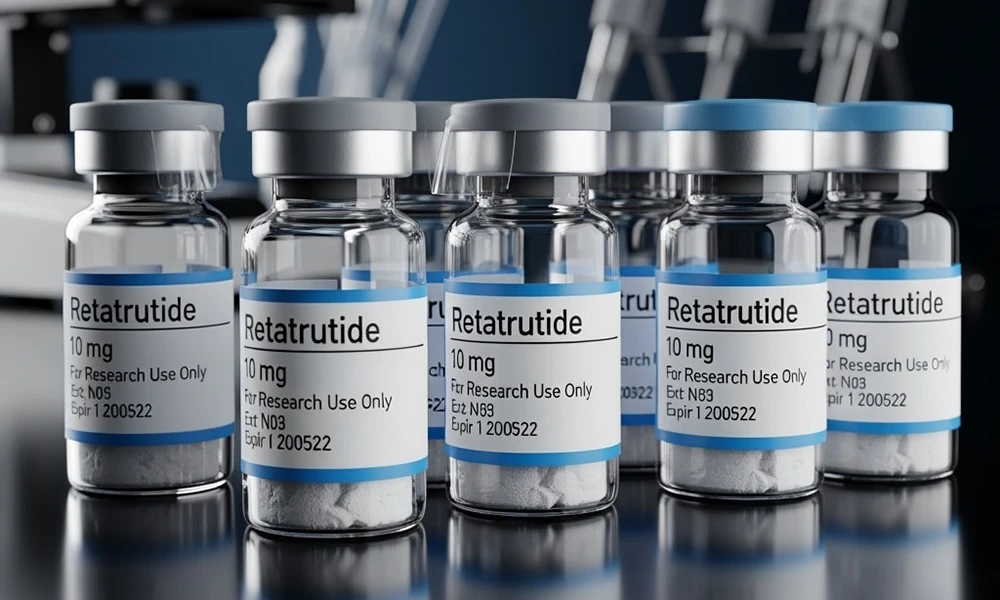Key Takeaways
- Semaglutide is available in both oral and injectable forms, providing versatility in treatment for type-2 diabetes and weight management, allowing patients to choose based on their lifestyle and preferences.
- Both oral and injectable semaglutide are equally effective in reducing HbA1c levels and promoting weight loss, with studies showing significant benefits in managing type 2 diabetes and aiding weight reduction.
- Common side effects of semaglutide include gastrointestinal symptoms, and injectable forms can cause injection site reactions; cost and accessibility are also significant considerations due to high prices and availability issues.
Are you trying to decide between semaglutide tablets and injections? Both forms effectively manage type-2 diabetes and aid in weight loss, but they differ in administration convenience, dosing schedules, and side effects. This article will guide you through comparing “semaglutide tablets vs injection”, helping you determine which option fits your lifestyle and health needs best.
Understanding Semaglutide
Semaglutide is a game-changing medication in the treatment of type-2 diabetes and weight management. It works by mimicking the GLP-1 hormone, which helps to reduce blood sugar levels and suppress appetite. Initially used for treating type 2 diabetes, semaglutide has also received approval for weight loss, broadening its application. This medication is available in both oral and injectable formulations under the brand names Ozempic, Wegovy, and Rybelsus.
The introduction of the oral version of semaglutide in 2019 marked a significant milestone, offering more convenient administration options. The availability of both oral tablets and injectable forms means that patients can choose between taking a daily oral semaglutide tablet or a weekly semaglutide injection. Wegovy has been FDA-approved for weight loss in both diabetic and non-diabetic individuals, while Ozempic and Rybelsus are mainly prescribed for managing diabetes. This versatility in semaglutide formulations allows healthcare providers to tailor treatment plans to individual patient needs.
Comparing Semaglutide Tablets and Injections

Patients can select either oral or injectable semaglutide for administration. The main difference lies in the method of administration, with oral semaglutide being taken once daily, typically in the morning on an empty stomach, and injectable semaglutide being administered once a week. This distinction can significantly impact a patient’s daily routine and overall treatment experience.
Despite their differences, both oral and injectable semaglutide demonstrate similar effectiveness in managing blood sugar levels and promoting weight loss. Studies have shown that both forms of semaglutide are equally effective in reducing A1C levels and achieving glycemic control. With this overview in mind, let’s delve deeper into the specific aspects of administration methods, dosing differences, and effectiveness and glycemic control.
Administration Methods
The means of administering semaglutide significantly affects patient compliance and convenience. Oral semaglutide must be taken daily on an empty stomach with a small amount of water, and patients need to wait at least 30 minutes before consuming any food or other medications. This requirement can be challenging for some patients, especially those with busy schedules or unpredictable meal times.
On the other hand, injectable semaglutide offers the benefit of once-weekly administration. This less frequent dosing schedule can be more convenient and less disruptive to a patient’s daily routine. For many patients, the choice between oral and injectable forms may come down to personal preference and lifestyle compatibility.
Dosing Differences
Oral and injectable forms of semaglutide have different dosing regimens.
For oral semaglutide:
- Start at a daily dose of 3 mg
- Increase to 7 mg after the first 30 days
- For patients requiring additional glycemic control, the dose can be further increased to oral semaglutide 14 mg once daily
This gradual increase helps to minimize side effects and allows the body to adjust to the medication.
In contrast, injectable semaglutide is usually started at a dose of 0.25 mg once weekly for the first month, gradually increasing to 0.5 mg to 1.0 mg weekly over time to achieve a maintenance dose. For weight loss specifically, the dose of injectable semaglutide marketed under the brand name Wegovy can be increased to 2.4 mg once weekly. These dosing differences highlight the flexibility and adaptability of semaglutide treatment.
Effectiveness and Glycemic Control
Reducing A1C levels and promoting weight loss have been proven effective with both semaglutide forms. Research has demonstrated that:
- Oral semaglutide is as effective as injectable semaglutide in achieving these outcomes.
- The global SUSTAIN and PIONEER phase III clinical trial programs have studied the effectiveness and safety of once-weekly subcutaneous semaglutide and once-daily oral semaglutide.
- The trials have evaluated the outcomes of both formulations.
Significant reductions in HbA1c and body weight have been observed in patients taking either form of semaglutide, as supported by the American Diabetes Association. These results suggest that both oral and injectable semaglutide offer robust options for early diabetes treatment and effective glycemic control.
The choice between the two forms can thus be made based on patient preference and lifestyle considerations, without compromising on efficacy and safety outcomes.
Weight Loss and Management with Semaglutide
With its promising results in weight loss and management, semaglutide serves as a valuable tool for patients battling obesity. Both the oral and injection forms of semaglutide have shown significant reductions in body weight across different patient groups. This indicates the effectiveness of both administration routes in aiding weight loss. Semaglutide injections have been observed to provide weight loss benefits, even in individuals who do not have diabetes. This demonstrates the potential of semaglutide for treating obesity in a wider population.
The STEP (Semaglutide Treatment Effect in People with Obesity) trials have been instrumental in leading to the approval of Wegovy, a high-dose semaglutide injectable specifically designed for weight loss. These trials have shown that participants using semaglutide, in conjunction with lifestyle changes, can achieve substantial weight loss.
This section will further explore clinical trial results and the importance of long-term significant weight loss maintenance, also known as weight reduction.
Clinical Trial Results
Robust evidence supporting semaglutide’s efficacy for weight loss has been provided by clinical trials. A 2021 research review found that once-daily oral semaglutide is as effective, if not more so, for weight loss compared to injectable versions. Participants taking a daily dose of 50 mg of oral semaglutide experienced up to a 15.1% reduction in body weight.
In patients with early type 2 diabetes managed with diet and exercise alone, semaglutide has been shown to have significant benefits. Here are the key findings:
- The injectable form of semaglutide reduced HbA1c by 1.6%
- The oral form of semaglutide reduced HbA1c by 1.4%
- The STEP trials demonstrated that high-dose injectable semaglutide resulted in significantly greater weight loss compared to a placebo.
These results highlight the effectiveness of semaglutide in managing type 2 diabetes and achieving weight loss.
Long-term Weight Maintenance
Maintaining weight loss over the long term is integral to any weight loss journey. Studies have shown that participants tend to regain weight lost when they stop taking semaglutide. In a 2022 study, patients regained two-thirds of their prior weight loss after discontinuing the medication.
To sustain the benefits of weight loss and prevent weight regain, ongoing treatment with semaglutide is often necessary. This highlights the importance of a sustained approach to weight management, ensuring that patients continue to receive the benefits of the medication over the long term.
Safety Profiles and Side Effects

Being aware of semaglutide’s safety profiles and potential side effects is vital to make an informed decision about its utilization. Common side effects of semaglutide include gastrointestinal symptoms such as nausea, vomiting, diarrhea, and constipation. Additionally, there are specific side effects associated with injectable semaglutide, such as injection site reactions and potential cardiovascular risks.
It’s important to be aware of these side effects and discuss them with your healthcare provider before starting semaglutide treatment. In this section, we’ll delve into the detailed side effects, including gastrointestinal symptoms, injection site reactions, and cardiovascular risk factors.
Gastrointestinal Symptoms
Gastrointestinal symptoms are among the most common side effects associated with semaglutide use. Patients often experience:
- Nausea
- Vomiting
- Diarrhea
- Constipation
These symptoms can be particularly bothersome and may affect a patient’s willingness to continue the medication.
In some cases, patients may also experience belching, a bloated feeling, and passing gas. While these symptoms are generally mild and manageable, they can impact the overall treatment experience. Rare gastrointestinal symptoms might involve a burning sensation in the stomach, which should be promptly reported to a healthcare provider.
Injection Site Reactions
Injection site reactions are specific to the injectable form of semaglutide. Common reactions include warmth and tenderness at the injection site. These reactions are typically mild and resolve on their own.
However, rare injection site reactions can include blistering, discoloration, and skin infection. To minimize the risk of these reactions, it’s important to rotate the injection site after each shot. Recommended injection sites include the stomach, upper arm, or thighs. Concerns about injection site reactions and fear of needles can influence some patients to prefer oral semaglutide.
Cardiovascular Risk Factors
Semaglutide has both benefits and potential risks when it comes to cardiovascular health. It is approved to help protect against heart-related events in adults with obesity or overweight and established heart disease. This includes reducing the risk of heart attack, stroke, and cardiovascular death in people with type 2 diabetes.
However, semaglutide use may increase resting heart rate in some patients. If this occurs, it is important to consult with a healthcare provider. Additionally, stopping injectable semaglutide before completing the treatment program may lead to weight regain and loss of cardiovascular benefits. Patients should weigh these factors when considering semaglutide as a treatment option.
Cost and Accessibility
The decision to use semaglutide can be greatly influenced by its cost and accessibility. Here are the prices for semaglutide:
- Ozempic (injectable) and Rybelsus (oral): $935.77 per month
- Semaglutide for type 2 diabetes: $1,029 per month
- Wegovy injection for weight loss: about $1,430 per month using an online coupon for cash-paying customers.
Factors such as insurance coverage, the specific pharmacy, and other elements can affect the exact prices of semaglutide. Patients should consider these factors and discuss them with their healthcare provider and insurance company to determine the most cost-effective option. This section will further explore list prices, savings programs, and FDA approval and availability.
List Prices and Savings Programs
Novo Nordisk, the manufacturer of semaglutide, offers several savings programs to make the medication more affordable for eligible patients. For instance, the Novo Nordisk copay card can reduce copay expenses for eligible patients to as little as $0 for a 28-day supply of Wegovy, subject to maximum savings of $225. Additionally, Ozempic and Rybelsus have $25 copay cards available online for commercially insured patients.
These savings programs can significantly reduce the out-of-pocket costs for patients, making semaglutide more accessible. Patients should inquire about these programs and take advantage of them if they qualify. It’s also worth exploring other ways to save on Wegovy and pay less for Ozempic.
Availability and FDA Approval
Semaglutide in its various forms (Wegovy, Ozempic, Rybelsus) is FDA-approved for weight loss and the treatment of type 2 diabetes. However, availability can be an issue due to high costs and drug shortages. For example, Rybelsus, the oral version of semaglutide, is difficult for many people to access because of its high cost.
Additionally, injectable semaglutide is currently on the FDA’s Drug Shortages List, while the oral version is not. Patients should be aware of these availability issues and discuss alternatives with their healthcare providers if they encounter difficulties in obtaining semaglutide.
Patient Preferences and Lifestyle Considerations

Choosing between oral and injectable semaglutide hinges on patient preferences and lifestyle considerations. The decision should be made in consultation with a medical team that understands the patient’s unique needs and lifestyle. Factors such as the convenience of administration, fear of needles, and cultural considerations can influence this decision.
For some patients, the less frequent administration of injectable semaglutide may be more convenient and less disruptive to their work and social life. Others may prefer the daily routine of taking oral semaglutide, especially if they have a fear of injections or find oral medications more convenient.
This section will delve into how these factors affect daily routine integration and ease of use.
Daily Routine Integration
Integrating semaglutide into a daily routine can be more challenging with the oral form due to the need to coordinate with meal timings. Oral semaglutide must be taken first thing in the morning, at least 30 minutes before any food or other medications. This requirement can be difficult to manage for patients with busy or unpredictable schedules.
In contrast, subcutaneous semaglutide injections are administered once weekly, which can be less disruptive to daily routines. This less frequent dosing schedule can be more convenient for patients who prefer not to take medication daily. Patients should consider how each form fits into their lifestyle when making a decision.
Ease of Use
Many patients prefer oral medications because they avoid the pain and inconvenience associated with injections. The complexity and number of steps involved in medication administration can influence a patient’s preference for one form over another. Oral semaglutide is straightforward to take, but it requires coordination with meal timings.
Injections, while initially intimidating for some, become straightforward once patients become accustomed to the process. Patients should weigh the convenience of oral medications against the simplicity of weekly injections when deciding which form of semaglutide to use.
Alternatives to Semaglutide
Despite semaglutide’s effectiveness in treating these conditions, alternative medications for type 2 diabetes and weight loss are available. It’s important to explore all options with a healthcare provider. These alternatives include other GLP-1 agonists like Trulicity and Saxenda, as well as non-GLP-1 medications such as SGLT-2 inhibitors, DPP-4 inhibitors, sulfonylureas, and thiazolidinediones. Each of these medications has its own benefits and side effects, which should be considered when choosing a treatment.
Patients should discuss these alternatives with their healthcare provider to determine the best option for their specific needs and health conditions. This section will explore other GLP-1 agonists and non-GLP-1 medications as potential alternatives to semaglutide.
Other GLP-1 Agonists
Trulicity and Saxenda are two notable GLP-1 receptor agonists that serve as alternatives to semaglutide. Trulicity works by mimicking GLP-1, promoting insulin release and slowing down digestion. It is administered once weekly, similar to injectable semaglutide, and offers similar benefits in terms of glycemic control and weight loss.
Saxenda, known as liraglutide, is another GLP-1 receptor agonist approved for weight loss. It helps reduce appetite by acting on GLP-1 receptors in the brain’s hypothalamus and requires daily injections. The network meta-analysis found that oral semaglutide resulted in a significantly greater reduction in body weight compared to all GLP-1RA comparators, except subcutaneous semaglutide 0.5 mg and 1.0 mg. This highlights the potential of oral semaglutide as an effective option for weight management in certain patient populations.
Non-GLP-1 Medications
Non-GLP-1 medications offer additional options for diabetes treatment and weight management. SGLT-2 inhibitors, such as empagliflozin, work by preventing glucose reabsorption in the kidneys, leading to increased glucose excretion in the urine. These medications can improve blood glucose levels and promote weight loss but may cause side effects like urinary tract infections.
DPP-4 inhibitors, such as sitagliptin, increase levels of incretin hormones, aiding insulin release and reducing glucose production. They offer improved glucose control with a low risk of hypoglycemia but can cause side effects like upper respiratory tract infections and headaches. Other alternatives include sulfonylureas and thiazolidinediones, which can be considered if GLP-1 agonists are not suitable.
Summary
In summary, semaglutide is a versatile and effective medication for managing type 2 diabetes and promoting weight loss. Available in both oral and injectable forms, it offers patients flexibility in choosing a treatment that best fits their lifestyle and preferences. Oral semaglutide requires daily administration, while injectable semaglutide is taken once weekly, each with its own set of advantages and challenges.
Ultimately, the choice between oral and injectable semaglutide should be based on individual patient needs, preferences, and lifestyle considerations. By understanding the differences in administration methods, dosing schedules, effectiveness, side effects, costs, and patient preferences, patients and healthcare providers can make informed decisions to optimize diabetes and weight management. Remember, the best treatment is the one that you can adhere to and that fits seamlessly into your life.
Frequently Asked Questions
Meet the Author

Bradley Keys
Bradley Keys is an accomplished writer who has covered a wide variety of health, nutrition, and wellness topics. He graduated with a Bachelor of Science from Florida State University, and has extensively explored a diverse range of subjects within the realms of health, wellness, and nutritional supplementation, showcasing a broad and in-depth understanding of these interconnected fields.
Reviewed by :

Dr. Majid Sabour
Dr. Majid Sabour, MD, is a renowned expert in medical weight loss and the founder and medical director of Gent's Doctor clinic in Beverly Hills, California. With over 25 years of experience, Dr. Sabour is board-certified in family medicine and specializes in helping patients achieve their weight loss goals through personalized medical treatments. He graduated from Zaporizhzhia State Medical University in Ukraine and completed a family medicine residency program with Columbia University and Cornell at New York-Presbyterian Hospital in Manhattan. Licensed in both New York and California, Dr. Sabour is dedicated to providing comprehensive weight loss solutions that promote overall health and well-being.











